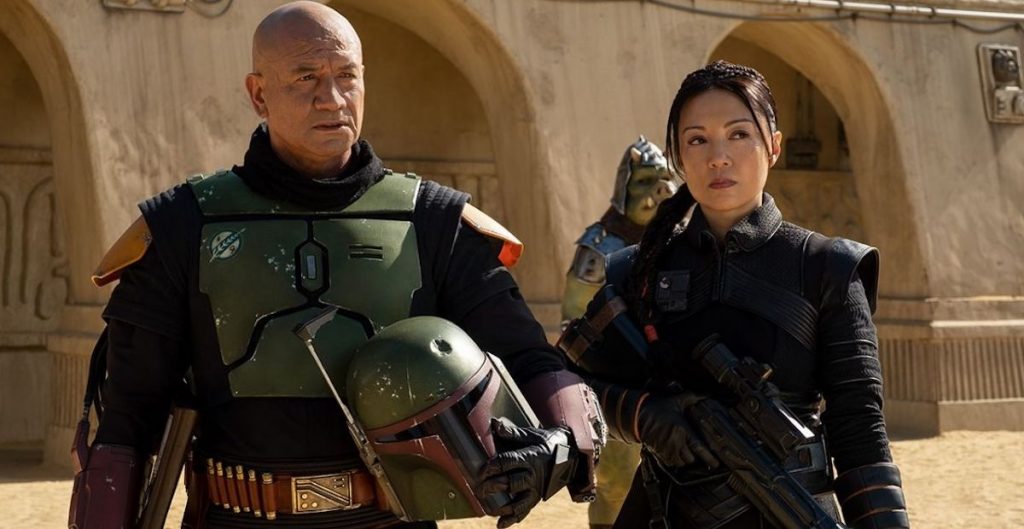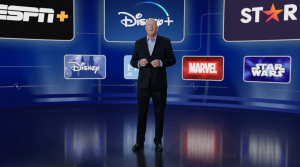
After more than 35 years of operation, TBI is closing its doors and our website will no longer be updated daily. Thank you for all of your support.
TBI Weekly: How Disney’s banking on turning content into cash
Disney will be 100 years old in 2023, but what does the Mouse House have in store for the final 12 months of its first century? Richard Middleton picks apart the company’s recent results and finds out it’s mostly “content, content, content”.
Disney has come a long way since it first entered the entertainment industry almost a century ago.
From its much-lauded humble beginnings, the company now sprawls the globe with fingers in innumerable pies – but it is fitting that in its centenary year the focus seems to be on returning to where it all began.
Take a look at its earnings call earlier this week. ‘Revenue’ was mentioned 16 times; ‘income’ got 12 mentions; ‘Covid’ got nine mentions; ‘parks’ soared to 30. But it was ‘content’ that dominated, mentioned 44 times during the 50-odd minutes of chat.
Admittedly, four of those utterances came from CEO Bob Chapek in one sentence. “It’s all about content, content, content and we are bullish about our future content going forward, not only in terms of quality, but also in terms of quantity.”
It goes to underline that despite some recent wobbles around the long-term profitability of streaming, content – and lots of it – remains the only game in town.
Headline-grabbing
For the Mouse House, news that Disney+ had added a further 11.8 million subscribers in its first fiscal quarter of 2022 came as a suitable antidote to its less than impressive end to 2021 and it predictably took many of the headlines.
Yet the Encanto and Pam & Tommy operator, which now counts a global total of 129.8 million subscribers for Disney+, also revealed much about its current outlook in the analyst call that followed.
Putting its grand total of 196 million streaming subscribers (including services such as Hulu and ESPN+) to one side, the major focus for Chapek & Co was on Disney’s hits.
These included the company’s recent 23 Oscar noms, ranging from animation staples such as Pixar’s Luca to documentary Summer Of Soul, but Chapek also referenced numerous series, ranging from Disney+ originals Hawkeye and The Book Of Boba Fett, to ABC’s mockumentary Abbott Elementary.
Indeed, six of the 10 most-watched programmes across the streamers were ‘general entertainment’ titles produced in-house, he added. “And general entertainment is an increasingly powerful driver of engagement in most of our international markets where such content is already included in our service under the Star brand.”
Spending surge
It’s little surprise, then, that moving more existing content into its own services is a “priority”, as Chapek put it. Episodes of Grown-ish, Black-ish and The Wonder Years have recently been added to Disney+ in the US and there’s plenty more where that came from.
Originals are coming thick and fast too. It’s not difficult to see how that almost unimaginable $33bn content budget in 2022 is being spent, even if a third goes on sports.
There’s Star Wars series Andor and Obi-Wan Kenobi, Marvel duo Ms. Marvel and She-Hulk, shorts from Big Hero 6 and Cars, a live-action version of Pinocchio with Tom Hanks, and Hocus Pocus 2, apparently a Chapek household favourite, all due later this year.
Perhaps most importantly, however, is that having reeled off that line-up, Chapek immediately brought the attention back to cold hard numbers. “As I’ve said before,” he told analysts, “we continue to manage our services for the long term and maintain confidence in our guidance of 230 million to 260 million total paid Disney+ subscribers globally by the end of fiscal 2024.”
The cost of this content-driven subs drive is well-documented and eye-watering, of course. Disney finance chief, Christine McCarthy, outlined that the operating income of its Media and Entertainment Distribution in the first quarter of 2022 had decreased by more than $600m on the same time last year, because programming and production costs soared.
But that’s not deterring anyone in the long term.
McCarthy also warned that further investment in programming and production costs, “primarily driven by direct-to-consumer and linear networks”, were in the works for Q2.
Streaming programming and production expenses are set to rise by between $800m-$1bn, while linear networks will see their content spending rise by approximately $500m. Some of that is caused by the impact of Covid; much of it is not.
Elasticity of programming
Despite the glut of shows on the slate, there is no sign that Disney is planning to cut back spending in the near term, something that should play particularly well with non-US producers. But more on that later.
Disney+ is already in around a third of US homes with broadband, which is some stat in and of itself. But there’s still “some headroom” to attract “fans that have expressed interest in subscribing,” Chapek said, adding that the Mouse House is “not nearly tapped out on each of the major franchises if someone identifies as a Lucas fan, Star Wars or as a Marvel fan or as a Disney fan.”
General entertainment shows remain the biggest potential audience driver, he added, and it’s clear that more in-house IP will make its Mouse House home at Disney+.
Yet while the brand is synonymous with kids, more than half of its subscribers do not have children, Chapek said. “It’s a very broad general service, of course, driven by the Disney brand and driven by families, but what we’ve seen time and time again is that the elasticity of Disney and its brand is much greater than we might have given it credit.”
That, of course, is underlined with shows such as Pam & Tommy, but it plays particularly strongly into the international side, as Chapek admitted, with the launch of the Star branded element of Disney+ in Europe.
Coupled with the other driver for its international business – “the predominance of local content” – and the potential for non-US prodcos cannot be ignored. Chapek highlighted the 340 productions that are already being developed and it’s clear that the regional thrust into originals, such as the “afterburners” that have been set on European programming, will continue for some time.
“We’re bullish on the future of Disney+, both domestically and internationally, driven by not only additional prevalence of titles within our major franchises, but also general entertainment and specifically in the international territories local content.”
The hope is that with all this content, content, content comes a correlated subscriber stickiness. Chapek said one goal – delivering a new title every week – had been achieved, but by 2023, the aim is “to get to a steady state, which is even higher than we have right now.”
He added: “That will give us the impetus to increase that price value relationship even higher and then have the flexibility if we were to so choose to then look at price increases on our service.” And then, all that content will be worth it.






